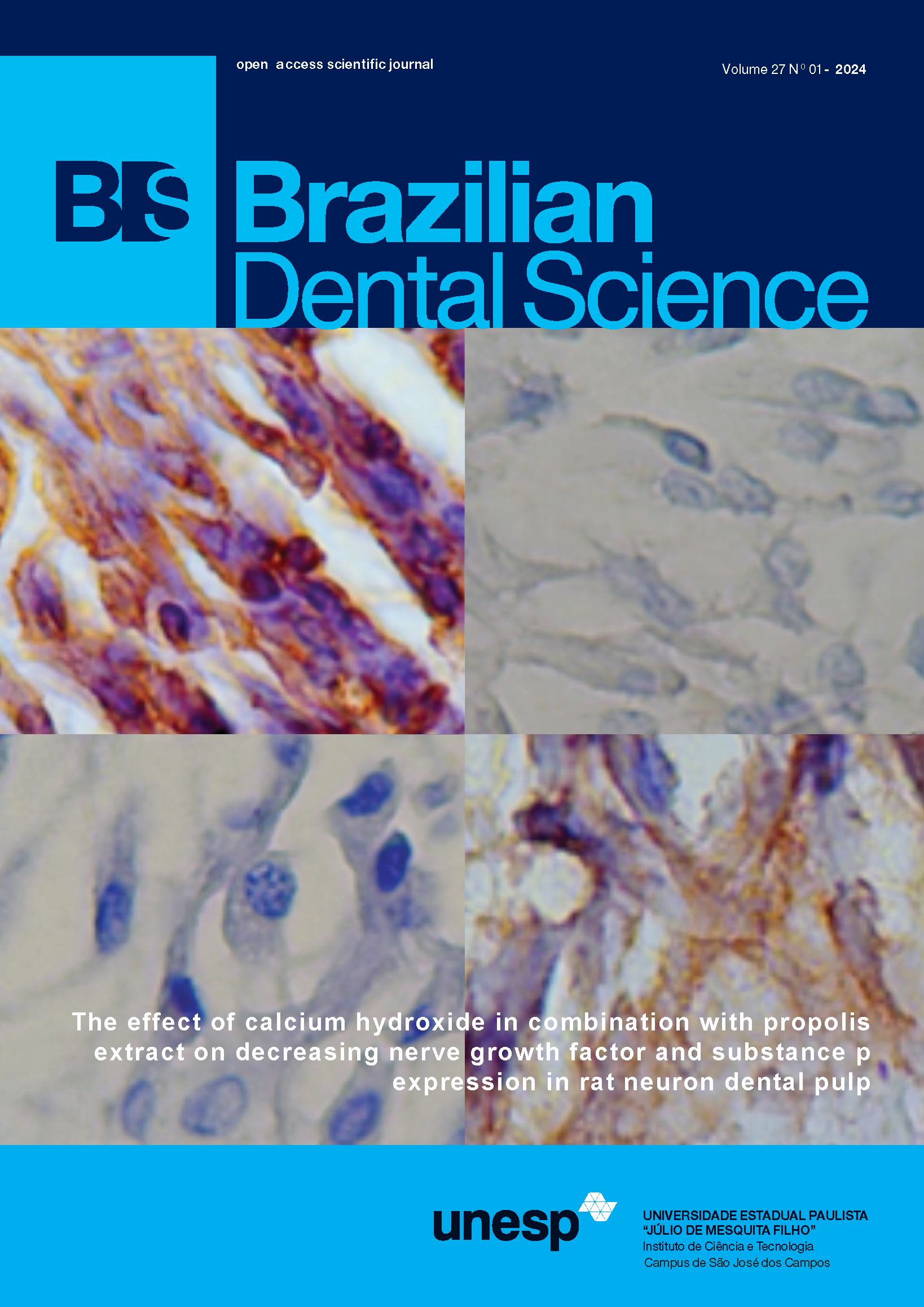Effect of ovarian dysfunction induced ovariectomy and Porphyromonas gingivalis induction to risk of metabolic syndrome: in vivo study
in vivo study
DOI:
https://doi.org/10.4322/bds.2024.e3880Abstract
Periodontal diseases and metabolic syndrome are related to complicated multifactorial conditions. However, the relationship is not yet evident. Estrogen insufficiency might correlate to this condition, possibly caused by ovarian removal and Porphyromonas gingivalis (P. gingivalis) infection. This study aimed to evaluate the effect of ovarian dysfunction caused by ovariectomy and P. gingivalis infection to metabolic syndrome development. This study was an experimental laboratory study using female rats Sprague Dawley Strain. Animal models were divided into four groups: control, ovariectomy (OVX), ovariectomy-periodontitis (OPG), and periodontitis (PG). The purpose of every treatment in each group was to induce ovarian dysfunction. The OVX group was undertaken ovaries removal surgery. PG was performed P. gingivalis induction. Therefore OPG was a combination of ovariectomy and P. gingivalis induction. Blood was drawn and observed on days 0, 3, 7, 14, 21, and 28. The blood sample was examined for uric acid, cholesterol, glucose and estrogen. The collected data were all statistically examined. All treatment groups presented body weight and blood biochemical observation significantly higher than the control group, except total cholesterol (p<0.05). Moreover, most variables presented a correlation between groups to body weight and biochemical blood indicators, except blood uric acid level (R>0.5). The metabolic syndrome was triggered by ovarian dysfunction brought on by P. gingivalis infection after ovariectomy. They both took the same risk. Even P. gingivalis induction made metabolic syndrome in the group of animal models which underwent ovariectomy worse.
KEYWORDS
Estrogen deficiency; Metabolic syndrome; Ovariectomy; Ovarian dysfunction; P. gingivalis.
Downloads
Published
How to Cite
Issue
Section
License
Brazilian Dental Science uses the Creative Commons (CC-BY 4.0) license, thus preserving the integrity of articles in an open access environment. The journal allows the author to retain publishing rights without restrictions.
=================




























